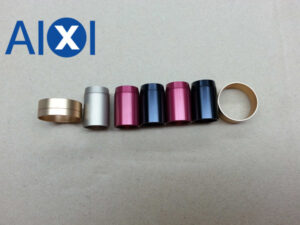What is aluminum anodizing?
Anodizing is a relatively simple electrochemical process that has been used for nearly a century to increase the thickness of native oxide layers on aluminum surfaces.
Aluminum Anodizing is a strong and durable finish that maintains the beauty and natural metallic luster of aluminum while enhancing its natural ability to withstand the elements. Anodizing is an indispensable finish that will not flake, peel or Foaming. The controlled formation of oxide layers is much harder, more durable and about a thousand times thicker than naturally occurring thin oxide layers.
The advantages of aluminum anodizing treatment
1. Easy to maintain, regular cleaning with water and mild detergent can restore its original luster.
2. The anodized film will not peel off because it is actually part of the metal.
3. Anodizing gives the metal a translucent appearance because the aluminum profile can be seen under the oxide film.
3. The process is not affected by sunlight, and is not easy to fade in most cases.
4. No matter from which angle, the anodic oxide film is consistent.
5. The final product will not release volatile organic compounds (VOC), nor will any heavy metals be involved in the process.
Disadvantages of anodizing aluminum
1. In urban areas, surfaces may be susceptible to acidic contaminants.
2. The translucency of this paint can cause problems with color variation between batches – although this lack of uniformity has decreased recently.
3. Anodized films are usually only available in matte and polished finishes.
4. Since the anodizing process can only be applied to aluminum, other architectural elements of similar color may look significantly different.

 Deutsch
Deutsch Français
Français 日本語
日本語 Español
Español
